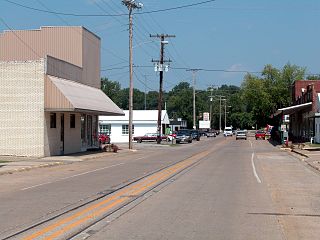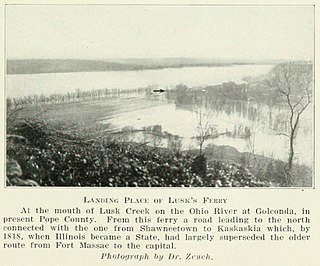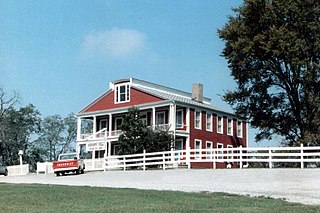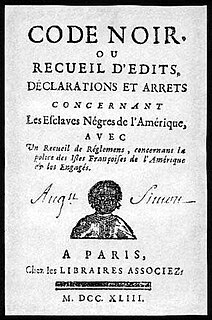
Williamson County is a county in Southern Illinois. At the 2020 census, it had a population of 67,153. The largest city and county seat is Marion.

Hardin County is a county located in the U.S. state of Illinois. According to the 2020 census, it has a population of 3,649, making it the least populous county in Illinois. Its county seat is Elizabethtown. Hardin County is located in the part of the state known as Little Egypt. Hardin County was named for Hardin County, Kentucky, which was named in honor of Colonel John Hardin, an officer in the American Revolutionary War and the Northwest Indian War.

Gallatin County is a county located in the U.S. state of Illinois. According to the 2020 census, it has a population of 4,828, making it the third-least populous county in Illinois. Its county seat is Shawneetown. It is located in the southern portion of Illinois known locally as "Little Egypt".

Carbondale is a city in Jackson and Williamson Counties, Illinois, United States, within the Southern Illinois region informally known as "Little Egypt". The city developed from 1853 because of the stimulation of railroad construction into the area. Today the major roadways of Illinois Route 13 and U.S. Route 51 intersect in the city. The city is 96 miles (154 km) southeast of St. Louis, Missouri, on the northern edge of the Shawnee National Forest. Carbondale is the home of the main campus of Southern Illinois University (SIU).

Cave-In-Rock is a village in Hardin County, Illinois, United States. Its principal feature and tourist attraction is nearby Cave-In-Rock, on the banks of the Ohio River. In 1816, the earliest known permanent white settlers arrived and started building a town near the cave. The town was originally known as Rock and Cave, Illinois, with a post office under this name. On October 24, 1849, the town was officially renamed Cave-In-Rock. Cave-In-Rock was incorporated as a village in 1901. The population was 318 at the 2010 census.

Rosiclare is a city in Hardin County, Illinois, along the Ohio River. The population was 1,160 at the 2010 census, down from 1,213 at the 2000 census.

New Athens is a village in St. Clair County, Illinois, United States. Based upon common usage, the 'A' is always sounded with a long vowel, rather than a short vowel, by its residents, unlike the most commonly used English pronunciation of the city in Greece.

Marion is a city in Williamson and Johnson Counties, Illinois, United States, and is the county seat of Williamson County. The population was 16,855 at the 2020 census. It is part of a dispersed urban area that developed out of the early 20th-century coal fields.

James Ford, born James N. Ford, also known as James N. Ford, Sr., the "N" possibly for Neal, was an American civic leader and business owner in western Kentucky and southern Illinois, from the late 1790s to mid-1830s. Despite his clean public image as a "Pillar of the Community", Ford was secretly a river pirate and the leader of a gang that was later known as the "Ford's Ferry Gang". His men were the river equivalent of highway robbers. They hijacked flatboats and Ford's "own river ferry" for tradable goods from local farms that were coming down the Ohio River.

Micajah "Big" Harpe, born Joshua Harper, and Wiley "Little" Harpe, born William Harper, were murderers, highwaymen and river pirates who operated in Tennessee, Kentucky, Illinois and Mississippi in the late 18th century. They are often considered the earliest documented serial killers in the United States history.

Lusk's Ferry was a place where pioneers crossed the Ohio River from Kentucky into Illinois. Some sources say that Golconda, Illinois was once called "Lusk's Ferry". Others say that the name properly refers to the place across the River, in Livingston County, Kentucky.

The Crenshaw House is an historic former residence and alleged haunted house located in Equality Township, Gallatin County, Illinois. The house was constructed in the 1830s. It was the main residence of John Crenshaw, his wife, and their five children.

John Hart Crenshaw was an American landowner, salt maker, kidnapper and slave trader, based out of Gallatin County, Illinois.

The Reverse Underground Railroad is the name given, sardonically, to the pre-American Civil War practice of kidnapping in free states not only fugitive slaves but free blacks as well, transporting them to slave states, and selling them as slaves, or occasionally getting a reward for return of a fugitive. Those who used the term were pro-slavery and angered at an "underground railroad" helping slaves escape. Also, the so-called "reverse underground railroad" had incidents but not a network, and its activities did not always take place in secret. Rescues of blacks being kidnapped were unusual.

Samuel Ross Mason, also spelled Meason, was a Virginia militia captain, on the American western frontier, during the American Revolutionary War. After the war, he became the leader of the Mason Gang, a criminal gang of river pirates and highwaymen on the lower Ohio River and the Mississippi River in the late 18th and early 19th centuries. He was associated with outlaws around Red Banks, Cave-in-Rock, Stack Island, and the Natchez Trace.

The Sturdivant Gang was a multi-generational, family gang of counterfeiters, whose criminal activities took place over a fifty-year period, from the 1780s, in Connecticut and Massachusetts, with one branch of the family going to Tennessee via Virginia and a second family branch going to Ohio and finally settled on the Illinois frontier, between the 1810s to 1830s.

John Duff, born John McElduff, or John Michael McElduff, because early court records referred to him as John Michael Duff, was a counterfeiter, criminal gang leader, horse thief, cattle thief, hog thief, salt maker, longhunter, scout, and soldier who assisted in George Rogers Clark's campaign to capture the Illinois country for the American rebel side during the Revolutionary War.
Tolu is an unincorporated community and census-designated place (CDP) in Crittenden County, Kentucky, United States. As of the 2010 census it had a population of 88. It is located along Kentucky Route 135 near the Ohio River. It is 14 miles (23 km) northwest of Marion, the county seat.

Slavery in Illinois existed for more than a century. Illinois did not become a state until 1818, but earlier regional systems of government had already established slavery. France introduced African slavery to the Illinois Country in the early eighteenth century. French and other inhabitants of Illinois continued the practice of owning slaves throughout the Illinois Country's period of British rule (1763-1783), as well as after its transfer to the new United States in 1783 as Illinois County, Virginia. The Northwest Ordinance (1787) banned slavery in Illinois and the rest of the Northwest Territory. Nonetheless, slavery remained a contentious issue, through the period when Illinois was part of the Indiana Territory and the Illinois Territory and some slaves remained in bondage after statehood until their gradual emancipation by the Illinois Supreme Court. Thus the history of slavery in Illinois covers several sometimes overlapping periods: French ; British ; Virginia ; United States Northwest Territory (1787-1800), Indiana Territory (1800-1809), Illinois Territory (1809-1818) and the State of Illinois.

The Illinois Salines, also known as the Saline Springs or Great Salt Springs, is a salt spring site located along the Saline River in Gallatin County, Illinois. The site was a source of salt for Illinois' prehistoric settlers and is now an archaeological site with a large quantity of organic remains. After European settlement of Illinois, the salt springs became part of Illinois' first major industry and were one of the only places in Illinois where slavery was legal after 1818.


















